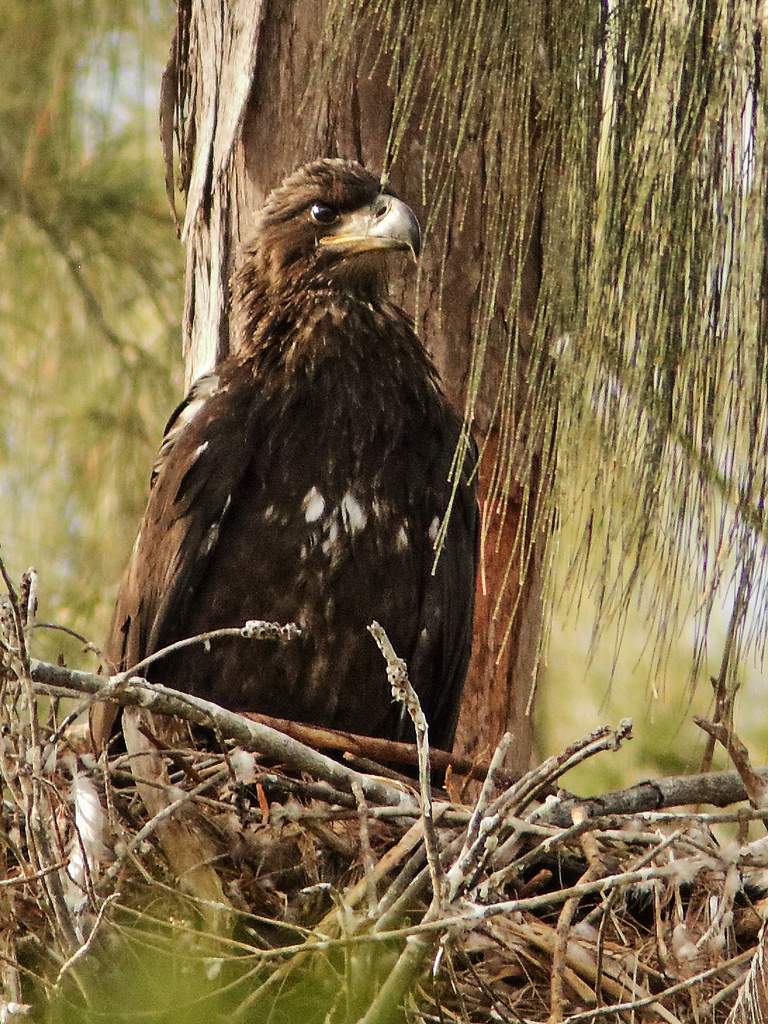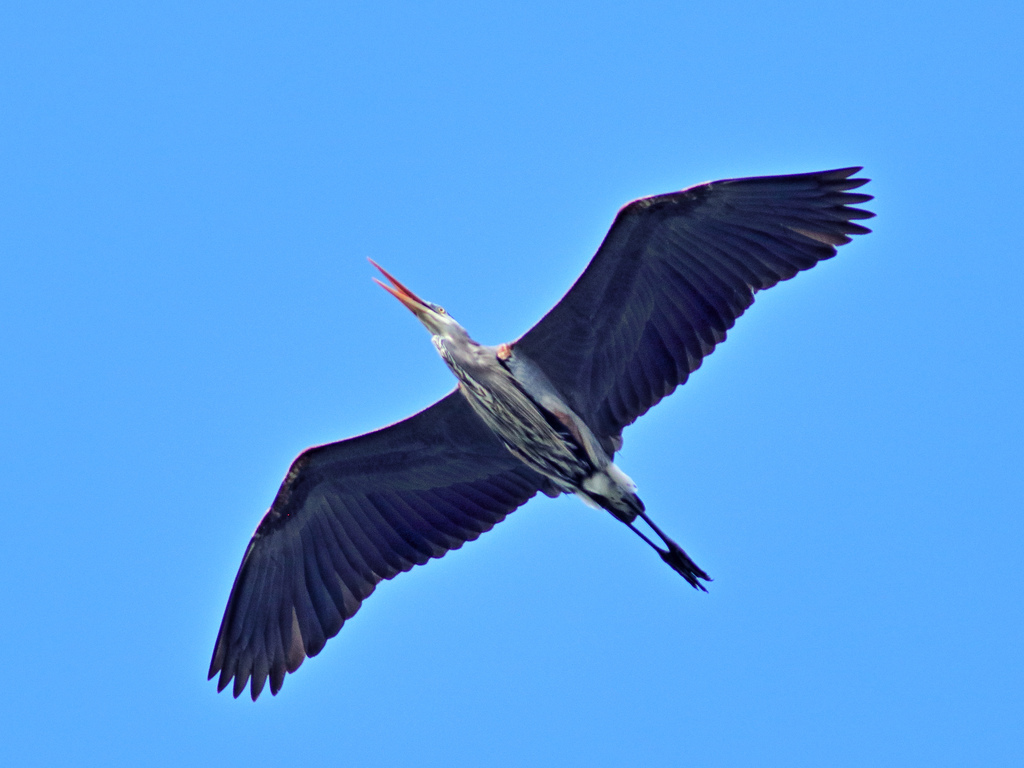Bald Eagles of Broward County, Florida
› ARCHIVED Pembroke Pines OBSERVATIONS & PHOTOS FROM PRIOR NESTING SEASONS
›
ARCHIVED 2018-2019 Observations of Pembroke Pines Bald Eagle Nest BO-002
MAR 16: Both eaglets flapping wings
MAR 16: Both eaglets flapping wings
|
Administrator
|
The Pembroke Pines eaglets are now about 9 weeks old. The first (P Piney 21) hatched about 65 days ago. Eaglets from this nest over the past 9 breeding seasons have fledged, on average, at age of 86 days (Range: 65-92 days, Mode and Median 82 days). All of these dates were based upon ground observations, so there is room for error.
This morning (between 8:50 and 9:45 AM) both eaglets were active. The male parent (Pride) was roosting close to the nest on the right support branch. The larger eaglet flapped frequently and hopped up a couple of times. She did not hover ("helicopter" or become airborne in place for several wing-beats) and neither has been reported to branch (climb out on limbs). First flight has been observed in seven past seasons, and occurred 4-8 days (average 6.4, Median 6 days) after branching and/or helicoptering was first observed.   The two eaglets differ in size. The larger one has a rounded head, a deeper base to its bill, and its gape extends a bit further beneath the eye than that of the smaller one. Presumably the larger was hatched first and is a female (P Piney 21, the 21st known hatchling from this nest). She already looks as big or even bigger than the male parent. The head of P Piney 22 looks smaller and more angular with a low forehead, quite similar to that of the male parent.  P Piney 21 (female):  P Piney 22 (male):  She happens to have a bit more white in her plumage-- a few white streaks on her neck and upper chest and a small white breast patch, but these are individual variations and may not be reliable in telling them apart as they grow. The younger eaglet is presumed to be a male because he has not competed actively with the naturally more aggressive female and they seem to get along quite amicably. This has kept him from being injured and his caring parents have seen that he gets fed even though his sister is always first in line for food. Two females would expend much more energy competing and even fighting, greatly disadvantaging the younger one and could result in starvation or killing of the weaker nest-mate (siblicide). Interestingly, the measurements of eaglets change after their first molt as they enter their second year. Their juvenile flight and tail feathers are actually about 1 -1.5 inches longer than those of adults. This provides them with extra lift as they learn to fly. During the past week, both eaglets have been seen picking at food and presumably eating alone at the nest. I obtained a bonus photo this morning as a Great Blue Heron flew directly over the nest: 
Ken Schneider
Web site: http://rosyfinch.com Blog: http://rosy-finch.blogspot.com Photos: <http://flickr.com/photos/rosyfinch> |
«
Return to ARCHIVED 2018-2019 Observations of Pembroke Pines Bald Eagle Nest BO-002
|
1 view|%1 views
| Free forum by Nabble | Edit this page |

